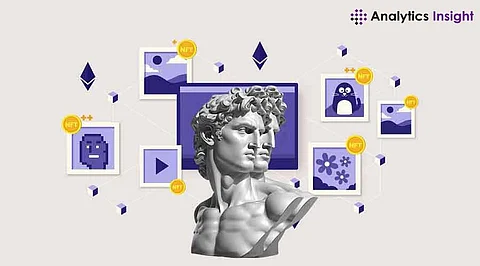

The emergence of Non-Fungible Tokens (NFTs) has revolutionized the digital asset landscape, enabling ownership of unique digital items such as art, music, and virtual real estate. However, the high valuation of many NFTs has made them inaccessible to the average investor. Fractional NFTs have emerged as a solution, democratizing access to these high-value assets by allowing multiple individuals to own a fraction of a single NFT.
A Fractional NFT is a Non-Fungible Token that has been divided into smaller fractions, each representing partial ownership of the original asset. This concept is akin to owning shares in a company, where each share represents a portion of the company's ownership. By fractionalizing an NFT, the asset becomes more accessible, allowing a broader audience to invest in high-value digital assets.
The process of creating a Fractional NFT begins with the minting of an NFT representing a high-value digital asset. This NFT is then locked into a smart contract, which divides the ownership into multiple fungible tokens, often adhering to the ERC-20 standard on the Ethereum blockchain. Each of these tokens represents a fraction of the original NFT and can be bought, sold, or traded independently on various platforms.
For example, consider a digital artwork valued at $1 million. By fractionalizing this NFT into 1 million tokens, each token would represent a 0.0001% ownership of the artwork, making it affordable for investors who may not have the means to purchase the entire asset.
Fractional NFTs lower the financial barriers to entry, enabling a wider range of investors to participate in the ownership of high-value digital assets. This democratization allows individuals to invest in assets that were previously out of reach due to high costs.
By dividing an NFT into smaller, tradable fractions, the asset becomes more liquid. Investors can buy or sell their fractional ownership on secondary markets, increasing the overall liquidity of the NFT market.
Investors can diversify their portfolios by acquiring fractions of multiple NFTs across various categories, such as art, music, and virtual real estate. This strategy allows for exposure to different asset classes without the need for substantial capital investment.
The regulatory environment surrounding Fractional NFTs is still evolving. Questions have been raised about whether fractional NFTs constitute securities, which would subject them to specific regulatory frameworks. For instance, a recent lawsuit filed by NFT artists against the U.S. Securities and Exchange Commission seeks clarity on whether NFT-based art should be regulated by the SEC.
Determining the value of fractional NFTs can be complex, as it depends on the valuation of the underlying asset and market demand for its fractions. Additionally, the lack of standardized valuation methods can lead to price discrepancies across different platforms.
The reliance on smart contracts introduces technical risks, such as vulnerabilities in the code that could be exploited. Ensuring the security and integrity of these contracts is paramount to maintain investor confidence.
In recent years, several platforms have emerged to facilitate the creation and trading of Fractional NFTs. For example, platforms like Fractional.art and Unique.li have gained attention for their innovative approaches to NFT fractionalization.
Moreover, major auction houses have shown interest in the NFT space. Christie's and Sotheby's have accepted cryptocurrency payments for selected items, aiming to attract crypto enthusiasts. Despite market fluctuations, these institutions remain optimistic about the potential of NFTs and fractional ownership to engage younger, tech-savvy collectors.
As the digital asset landscape continues to evolve, Fractional NFTs are poised to play a significant role in democratizing access to high-value assets. By lowering financial barriers and increasing market liquidity, they offer a promising avenue for broader participation in the ownership of digital and potentially physical assets.
However, for Fractional NFTs to achieve mainstream adoption, several challenges must be addressed. Clear regulatory frameworks are essential to provide legal certainty for investors and platforms alike. Additionally, developing standardized valuation methods and ensuring the security of smart contracts will be crucial in building trust within the market.
In conclusion, Fractional NFTs represent a transformative development in the realm of digital assets. By enabling shared ownership of high-value items, they open new opportunities for investment and engagement, paving the way for a more inclusive and dynamic digital economy.
